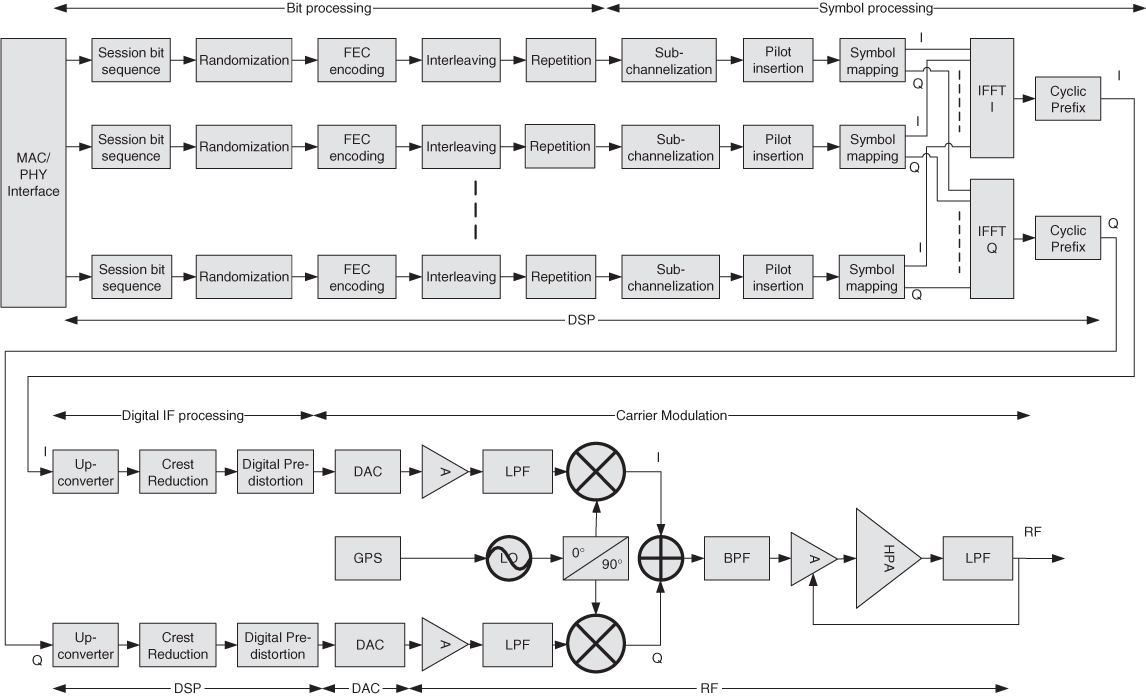Chapter 8
OFDM Implementation
The typical implementation of an OFDM equipment used in a WiMAX network is presented in this chapter but the antenna signal processing is not included here, as it is described separately, in Chapter 10. OFDM implementation in an LTE network is similar and the small deviations are described in Chapter 12.
8.1 Transmit Side
Once a wireless data session is established, the timing and the modulation to be used are determined by the scheduling algorithm. The block of bits to be transmitted is then processed. This block usually arrives through an Ethernet connection with a protocol overhead, to which the wireless protocol overhead is added.
The transmit side block diagram is shown in Figure 8.1. It can be divided into four blocks: bit processing, symbol processing, digital IF processing and carrier modulation.
Figure 8.1 OFDM transmit block diagram.

8.1.1 Bit Processing
Bit processing is divided into three stages: randomization, forward error correction coding, and interleaving; each of them is described next.
8.1.1.1 Randomization
The bit sequence is combined with a pseudo-random sequence, to break any long sequence of 1 s or 0 s. A polynomial is used to generate a Pseudo Random Bit Sequence (PRBS), which is mixed with the actual data using an XOR circuit.
8.1.1.2 FEC (Forward Error Correction) Encoding
Redundant data is added to the bit sequence to allow ...

